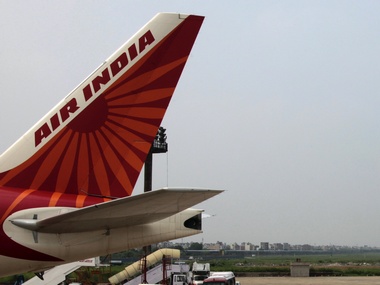New Delhi: It was constant pursuit of individual members of Star Alliance which finally lead to Air India’s entry into this prestigious airline grouping in the world. AI had been denied entry in 2011 when it failed to meet several criteria of Star Alliance. Given its poor operational performance, manpower issues and overall decrepit state till then, Star was reluctant to take in Air India.
On top of this, constant lobbying by a powerful Indian private airline against AI’s entry was making Alliance partners jittery. The board of Star Alliance voted on Friday and AI sources say till a day before the vote, hectic lobbying by the same private airline was being done to scuttle AI’s chances even in this instance.
But when the vote came, it was unanimous. And AI Chairman and MD Rohit Nandan is the man who walked away with credits for this success. Sources tell us he made sure that he engaged with each individual airline in the Alliance which comprises 28 of the world’s powerful airlines, individually.
[caption id=“attachment_1232737” align=“alignright” width=“380”]
 Reuters.[/caption]
Reuters.[/caption]
Nandan was speficially talking to the big daddies of the Alliance - Singapore Airlines, Air Canada and Lufthansa - over the last 18 months to elicit thier support before the alliance finally happened. Also, airlines closer home like Turkish, Egypt Air were sounded out for support.
So why is a Star Alliance entry critical for Air India? For two main reasons:
- It enhances connectivity that AI can offer from across India, helping its global operations manifold. This alliance means the potential threat from a Jet Airways-Etihad alliance is effectively nullifed.
Impact Shorts
More Shorts- It will add anywhere from 1-3% of passenger revenue to Air India’s bottomline as incremental revenues without entailing any significant expenditure. Annual revenue is about Rs 14,000 crore so this means anywhere between Rs 140 crore to Rs 420 crore.
The Alliance could spell trouble for Jet-Etihad’s global ambitions. Star Alliance member airlines use some of the busiest airports of the world as their hubs - London, Frankfurt, Singapore. Compare this with global connectivity that the Jet-Etihad alliance offers but through a single gateway - Abu Dhabi.
Sources pointed out that while Abu Dhabi offers close to 72 international connections agianst Delhi International Airport’s 49, the traffic throughput at Abu Dhabi is lower than Delhi even now. AI will use Delhi as its hub even after joining Star Alliance.
“So not only will the Alliance entry mean Air India can offer many, many more destinations and connections than the Jet-Etihad combine, it also means flights to and from some of the world’s busiest airports are now available to Indian travellers. This will mean any edge that Jet-Etihad had till now in international traffic from India is completely nullified”.
These sources said a team from Star Alliance will be meeting various officials of Air India on Wednesday and Thursday this week. The airline has already shared extensive data on over 80 operational matters with the Alliance and the team will meet all heads of departments concerned during its visit.
It could take “barely a few months” before the alliance is functional since most integration formalities have already been completed, these sources said.
Once AI becomes a Star Alliance member, instead of looking for a flight into the Gulf with either Emirates or Jet-Etihad, a passenger wanting to fly international from almost any city in India gets seamless transfers. On a single boarding card in some cases. The passenger can book flights to the final destination at one time and hop on to a flight operated by a Star Alliance member anywhere on the route. So even if AI does not directly to fly to a destination, it can now offer flights to that destination on the strength of this alliance.
Besides, an entry into Star Alliance means more frequent flyer mileage points, code sharing leading to a wider choice of flights and access to facilities at over 1000 lounges worldwide for AI passengers. The Star Alliance network offers 21,900 daily flights to 1328 airports in 195 countries.
)